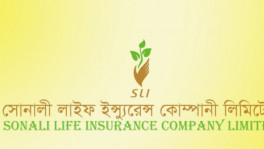A discovery that saved millions of lives
A hundred years ago from today, being diagnosed with diabetes was a death sentence. Insulin had not been discovered yet and diabetes baffled the medical community. It would be during the oppressively hot summer of 1921 that the world would change forever

The idea for insulin came to Frederick Banting in the morning of October 31, 1920, after he had read a medical journal article titled "The Relation of the Islets of Langerhans to Diabetes with Special Reference to Cases of Pancreatic Lithiasis".
After reading the article, the doctor went to sleep. At 2am he jumped out of bed and scribbled a 25-word-long hypothesis that, within the span of a year, would lead to one of the most significant medical discoveries of the 20th century.
Banting left for Toronto to seek a research opportunity to isolate the substance thought produced from the pancreas. In the process, another doctor called John Macleod met Banting and reluctantly agreed to allow him to use a bare bones lab, which had not been in use over the summer at The University of Toronto.
This is where Banting began his research on May 15, 1921, with the help of 22-year-old biochemistry student research assistant Charlie Best, and later Biochemist James Collip joined the pair in their research.
Banting and Charles began their experiments ligating the pancreases of dogs, thinking this would prevent destruction by the digestive pancreatic juices, and then isolating the extract from the islet cells.
Then, they processed the extract from the islet cells and injected an extract they called "insulin" into diabetic dogs. Together, the team was able to keep a dog alive without a pancreas. This ultimately led to the discovery of insulin.
Progress continued into the winter of 1921, when biochemistry professor James B Collip was brought on board to purify the pancreatic extract, thereby making it safe for human trials.
Soon, word of their discovery got out and the race was on to produce enough insulin to treat the flood of Type-1 diabetes patients arriving in Toronto to receive this miracle injection.
On January 23, 1922, Leonard Thompson, a 14-year-old Toronto boy who was drifting in and out of consciousness at Toronto General Hospital, became the first person to receive the purified extract of insulin and was resurrected from near death.

Five-year-old Teddy Ryder was among the first "younger" child patients to receive insulin. He went on to live 71 more years with controlled diabetes. The following year, the now-robust six-year-old wrote to Banting: "I am a fat boy now and I feel fine. I can climb a tree."
The first child with diabetes to receive insulin, however, was Elsie Needham. After she received the first dosage, she recovered from a diabetic coma. She was admitted to the Hospital for Sick Children in October, 1922. She was back in school by January next year.
Next year in February, doctor Frederick Banting and biochemist John Macleod published their paper on the successful use of an alcohol based pancreatic extract for normalizing blood glucose levels in a human patient.
Before the discovery of insulin, diabetic patients were doomed. Even on a strict diet, they would live no more than three or four years.
The effect of insulin on diabetic patients was nothing short of miraculous. Bill Bigelow, a young surgeon, who witnessed the early insulin trials, recalled seeing comatose patients "awakened dramatically, snatched from death's door."
American company Eli Lilly played a critical role in mass producing insulin, from pork and beef, and getting this life saving drug into the hands of many who so desperately needed it. During the summer of 1922 the insulin plant of Lilly hummed 24 hours a day producing the miracle drug. In an interview, Lilly was quoted saying that insulin is available to the consumer at a price below what an average person spends daily on cigars or a supply of gasoline.
In 1923, Banting and Macleod were named the Nobel Prize co-recipients in Physiology that year. In 1934, Banting was knighted as Sir Frederick Banting.
Banting died on February 21, 1941, during World War II, when he was involved in a plane crash. His one last heroic act was to dress the pilot's wounds before dying from his own injuries.
The modern day insulin is synthetic. It no longer requires pork or beef pancreas. It can be made in unlimited supply by relying on bacteria or yeast recombinant DNA technology.
Banting was offered up to USD1 million by pharmaceutical companies for the insulin patent. But he sold the right to the University of Toronto in 1923 for only USD1 to help humanity.
Amazingly, the development of insulin took less than two years. Today, marketing a new drug takes approximately 10 to 15 years.

This year marks the centenary of the development of therapeutic insulin in 1921 by Frederick Banting and Charles Best, under the supervision of John Macleod in collaboration with James Collip. It is a milestone of considerable significance for many in the global diabetes community and a landmark breakthrough in the history of medicine.
As we step into the hundredth year of insulin existing in the world, this magical extract has become outrageously expensive. The world's "big three" insulin producers - Eli Lilly, Novo Nordisk and Sanofi - dominate more than 90 percent of the world insulin market by value.
Often only one of these companies supplies insulin in a country, which means they more or less hold a monopoly there and can set prices as they wish. In some countries, notably China and India, there are domestic insulin companies that can help drive down the prices but the quality of the insulin can be compromised, which can lead to life-threatening circumstances.
There are many reasons why we are not seeing more companies making insulin, but patent evergreening is the major one. Patents give a person or organisation a monopoly on a particular invention for a specific period of time. Humalog, Lantus and other previous generation insulins are now off patent, as are even older animal based insulins.
What is happening is pharmaceutical companies take advantage of loopholes in patent systems to build thickets of patents around their drugs which will make them last much longer, in the process "evergreening" them.
This prevents competition and can keep prices high for decades. A recent I-MAK report showed that Sanofi, the maker of Lantus, is no exception. Sanofi has filed 74 patent applications on Lantus alone. This means Sanofi has created the potential for a competition-free monopoly for 37 years - narrowing chances for other pharmaceutical companies to file for an insulin patent and later produce it.
In the coming years, the International Diabetes Federation sees an opportunity to raise awareness about diabetes to an unprecedented level as a number of key dates related to the discovery of insulin come to pass. While these historic events have saved and improved the lives of millions living with diabetes, it is important to remind ourselves that insulin still remains beyond the reach of many who need it.


 Keep updated, follow The Business Standard's Google news channel
Keep updated, follow The Business Standard's Google news channel














